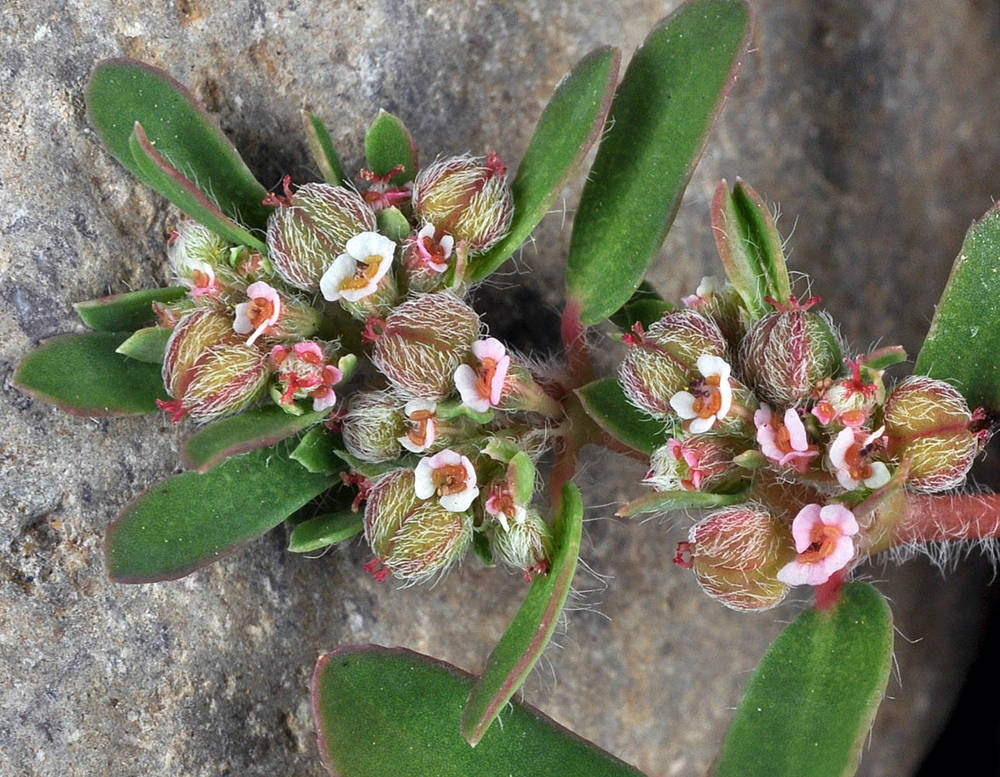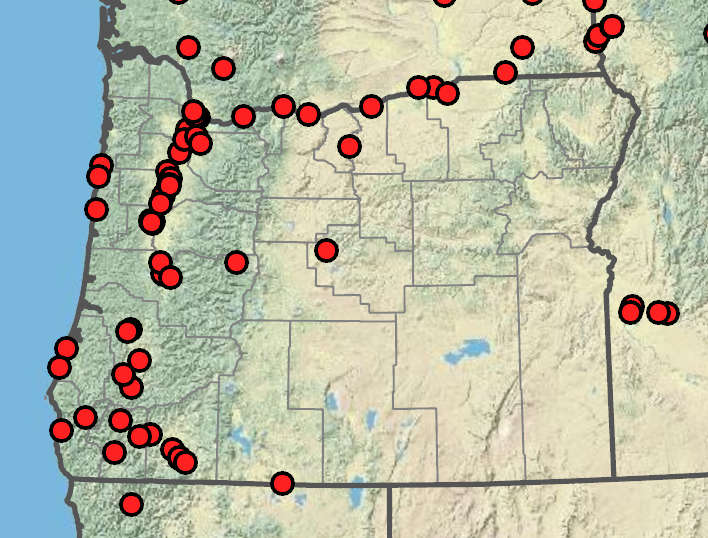Euphorbia heterophylla
Chamaesyce maculata
(synonym of Euphorbia maculata)
prostrate spurge, spotted sandmat, spotted spurge
linear-oblong to ovate-oblong, 5–15 mm, often with a central red spot;
margins entire to shallowly toothed;
tips rounded to acute;
surfaces glabrous or hairy;
petioles 0.5–1.5 mm;
stipules slender, fringed, 0.3–0.9 mm.
involucres 0.5–1 mm; hairy;
glands elliptic;
gland appendages white to pink.
ovoid, 1–1.5 mm; hairy.
ovoid to oblong, 0.7–1.3 mm, usually wrinkled, occasionally smooth.
Euphorbia heterophylla
Chamaesyce maculata
Sidewalks, cracks in pavement, roadsides, disturbed areas. Flowering Jun–Sep. 0–1300 m. Casc, CR, ECas, Est, Lava, Sisk, WV. CA, ID, NV, WA; throughout North America except northern Canada. Native.
Some sources speculate this species was originally native to eastern North America and was later introduced in other parts of the continent. Without definitive proof, however, we currently consider this species native.
Stephen Meyers
- Local floras:
BC,
CA,
OR,
WA
- Local Web sites:
CalFlora,
CalPhotos,
Flora NW,
PNW Herbaria
WildflowerSearch
iNaturalist (observations)
USDA Plants Database
- LBJ Wildflower Center
- SEINet
- Plants of the World Online
- Encyclopedia of Life
- Wikipedia
- Google Image Search



